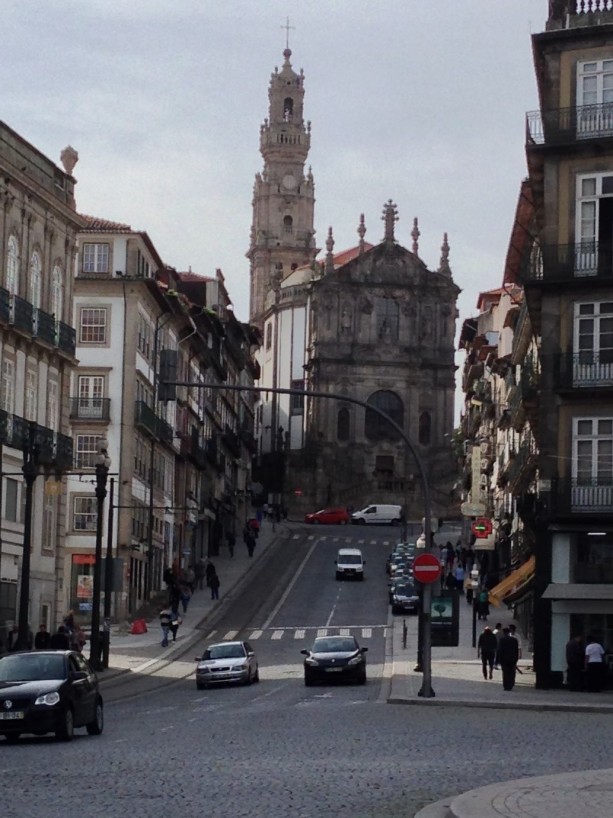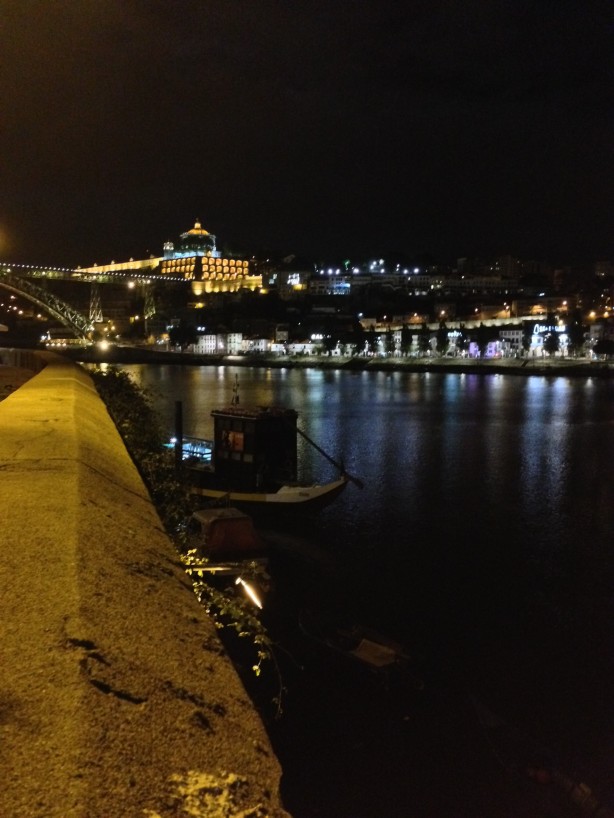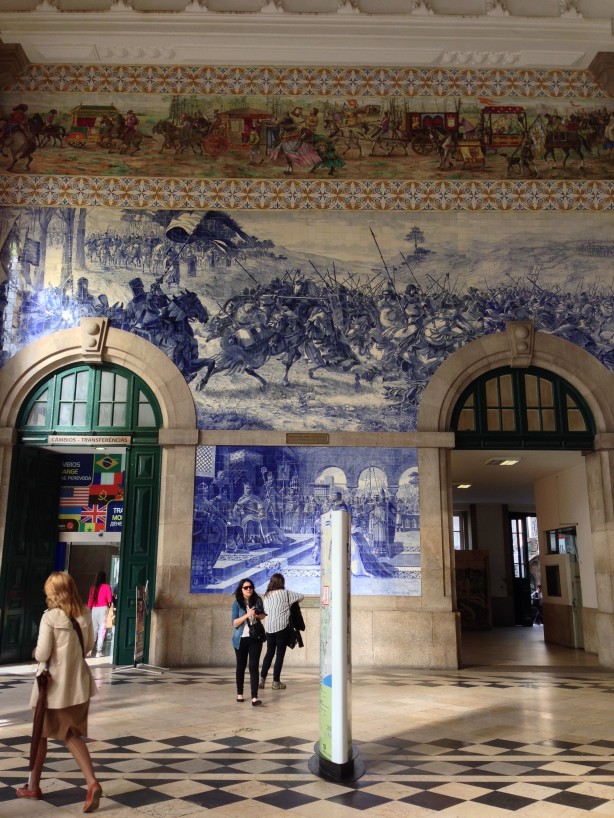Porto, the Gateway to the Douro Wine Region
Porto, formerly known as “Portus Cale” by the Romans, latin for Port of Cale, is now known as Oporto (The Port) by the locals following the Reconquest in AD 1000. This city is full of Old-World charm with its red-tiled roofs, soaring bell towers, extravagant baroque churches, and stately buildings tumbling down the hillside to the River Douro (Rio Douro). Porto is one of Europe’s oldest centers and was registered as a World Heritage site by Unesco in 1996.
Fun fact: Did you know that Porto put the “Portu” in Portugal? In AD 1000, after the reconquest of Portugal from the Moors, the city’s name was made the name of the new country,“Portucale.”
I personally love the beauty of this town, and on my first real visit to this town, I marveled at the historical and modern significance that it had on the wine industry. Porto is famous for its export of Port wine; however, this region has so much more to offer than just Port wine. Indeed, Porto is a vibrant city with amazing food and culture.
A little wine history of Porto:
While it is thought that grapes have been grown in Portugal for over 4,000 years, it wasn’t until the 14th century that Portugal really became known for its wine trade with England. This wine trade later expanded in the 17th century to other countries such as Scotland and the Netherlands.
Port Wine Basics:
Port wine, also known as Vinho do Porto, is a Portuguese fortified wine made exclusively from grapes from the Douro Valley in northern Portugal. It is typically a sweet red wine that is often enjoyed with desserts or cheeses. There are now many different types of port: white port, rose port and the traditional red port.
Before I delve into everything port, I want to talk about Porto. I’ve covered Port wines in this article.
The city of Porto:
Porto—or Oporto, as I like to call it—serves in many ways as the historical and cultural gateway to the stunning Douro River valley. It is worth it to stay a few days here before setting off into the Douro river valley.
Porto is a compact city with rolling hills, so be prepared to walk up and down quite a bit. I would recommend a great pair of walking shoes. As I visited the city, I created an “Oporto Must See List” which I saved on my Foursquare account. (I love using this tool because it maps it all out for me and as people provide me with recommendations, I add it to my list and can find it instantly.)
Porto is technically divided into three parts:
Ribeira, which is Porto’s riverfront center with a gorgeous view of all the Port wine houses across the river in Vila Nova de Gaia. This is a stunning neighborhood with great riverside restaurants and outdoor patios. It can be very touristy, so be prepared to look at menus and pricing first before sitting down. If you are a runner or a walker, you can run all the way from the port at the river’s edge inland as well as out to the sea along a busy road. I would recommend going early in the morning before the traffic picks up.
Places to visit:
- Palácio da Bolsa, R. de Ferreira Borges 55, next to the Church of St. Francis —This stunning building is a must-see. It has some lavishly decorated rooms, including the Arabian room, which was inspired by Granada’s Alhambra.
Place to eat:
- Bacalhau Restaurant—This tiny little place is hidden on Rua de Cima do Muro Bacalhoeiros 153. It is right on the river, and they offer some great dishes of seafood and in particular Bacalhau, also known as dried and salted cod, the nation’s national dish. They also have a great wine menu. You can sit outside or inside, but the views are worth waiting for a table outside. +351.960.378.883
City Center, which is located directly up from Ribeira, on the top of the hillside. I would consider this area to be a more realistic and less touristy area of Porto, especially if you are considering doing some shopping.
Places to visit:
- Sao Bento Train Station, Praca Almeida Garret: This train station, opened in 1916, is still in operation. The entry hall to the train station is covered in over twenty thousand vivid blue “azulejo” tiles, showing the historical and folk scenes of the Douro River region; the tiles were painted by Jorge Colaco in the 1900s. Throughout northern Portugal you will be able to find beautiful blue “azulejo” Portuguese tile that you can take home as a souvenir.
- Clérigos Church and Tower, Rua S. Felipe de Nery: Are you interested in seeing the beautiful city from above? If so, brave the 225-step climb to the top of this towering landmark of Porto. Afterwards, stop over at the Clérigos Vinhos & Petiscos for a small bite and great wine.
Places to eat and drink:
- Bella Doce Praça Almeida Garrett 11, is a great place to sit down and enjoy some of the local pastries and amazing coffee at a phenomenal price. At less than a Euro, you can enjoy a beautiful shot of espresso. It is located directly across from São Bento Train station and has white umbrellas covering the outdoor tables. The entrance has a white awning. It is also directly behind the large green magazine kiosk and by the entrance to the São Bento Metro stop.
- Clérigos Vinhos & Petiscos, Rua das Carmelitas, 151, is a cute wine bar that offers a really good selection of Portuguese wines and aperitifs. It is located in the middle of this very modern-looking outdoor mall with outdoor and indoor seating. I went in the middle of the afternoon, after lunch and before dinner, and enjoyed a small three-bite nibble and spent 3 euros for a Reserve glass of Douro wine. They serve regular-size meals for lunch and dinner.
- Café Aviz, Rua de Aviz 1, is a great no-fuss cafeteria where you can get a reasonably priced meal. I’ve heard the francesinha, which is a sandwich made with a number of different meats, roast beef, different sausages and bologna, then covered with melted cheese, and a beer-and-tomato sauce. It is then topped with an egg at some places and served with French fries. Be aware, it is a heart-attack type of meal but I would rather eat this than food at the millions of fast-food restaurants you now see. Click on this link for a fellow traveler’s experience with the Francesinha.
Vila Nova de Gaia
Now that you’ve stuffed yourself with this amazingly dense sandwich, let’s walk back down the hill and across the river to the Port wine center, Vila Nova de Gaia. This is arguably one of Porto’s main tourist attractions, the port-wine cellars (Caves do vinho do Porto). The Douro can be crossed by any of the six bridges that connect the two sides of Porto together. If you are walk as I would imagine you would after the Francesinha, cross via the Ponte Dom Luis I. The metro runs above it, and the cars and pedestrians can cross on the lower level directly from the Ribeira water front.
Vila Nova de Gaia has always played a very important role in the history of the port wine business. All port wine that was to be exported outside of Portugal, had to first pass through Gaia. It would travel from the Douro Valley, almost 100 kilometers, approx.. 62 miles down river to Gaia, where it would be stored and aged before it was shipped out. This is where you will find a number of port houses that are definitely worth a visit. Here are a few of my recommendations.
Places to visit and taste:
Quevedo Port Wine Lodge, Rua de Santa Marinha, 77, Vila Nova de Gaia: This family-owned port wine business was officially founded in 1991, but the history of the land and the family goes back even further. The Quevedo Vineyard is located in João da Pesqueira, a small town in the heart of Douro Valley, where they make still wines as well as port wines. Oscar, the most well known and recognized member of the family, acts as the face of Quevedo. He is also the member of the family whom you are likely to see in the tasting room, while his sister, Claudia, the winemaker, is generally out in Douro making the wine. Oscar explains how port is made. I personally love his accent. Enjoy:
W. & J. Graham’s Lodge, Rua do Agro 141, Vila Nova de Gaia: W & J Graham’s was founded in 1820 by the Graham brothers from Scotland. The lodge itself was built in 1890, where you can now visit, taste, and tour the amazing facilities. I would highly recommend visiting this great lodge. W & J Graham’s now belongs to the prestigious wine group, the Symington Family, along with CockBurn’s, Warre’s, and Dow’s.
Porto Calém, Av. Diogo Leite, 344, Vila Nova de Gaia: Calém is the closest port lodge to the bridge and therefore makes it a great beginning or end stop. Established in 1859, Calém is one of the oldest port houses in Vila Nova de Gaia. In 2006 and 2008, they won the Best of Wine Tourism award for their architecture and wine tourism services. They offer daily tours and hold a number of events throughout the year. Since 1998, Calém is now a part of Sogevinus Fine Wines S.A., which also owns Kopke, Barros and Burmester.
Given that you’ve probably already drank quite a bit of port at this point, the only option is return to the City Center or go across the river and enjoy the night life and great food Porto has to offer. While I haven’t had a chance to visit all these places, I would recommend checking out my “Oporto Must See List” on Foursquare for more recommendations given to me by fellow travelers and locals.
After visiting Oporto for a few days, make sure you make it to the Douro River Valley. Stay tuned for a series of stories on Portuguese wine and travel.
Chin Chin!
 Sacred Drop
Sacred Drop 


Great informative post and i really enjoys a lot while reading this post. many thanks for sharing…